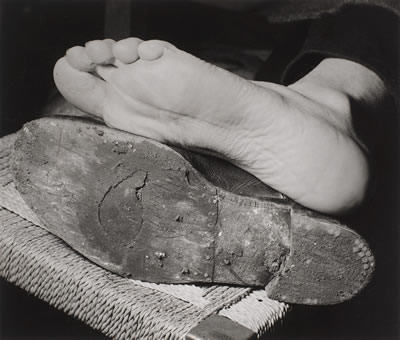 L E M U S É E D E L A P H O T O G R A P H I E L E M U S É E D E L A P H O T O G R A P H I E
EXHIBITIONS FROM 28.9.2019 UNTIL 19.1.2020
Centre d’art contemporain de la Fédération
Wallonie-Bruxelles
11, av. Paul Pastur (GPS : Place des Essarts) B-6032 Charleroi (Mont-sur-Marchienne)
T +32 (0)71 43.58.10 F +32 (0)71 36.46.45
mpc.info@museephoto.be
The museum is open from Tuesday to Sunday from 10 to 18.
Closed on December 25, 2019 and Januari 1, 2020.
La photographie sociale et documentaire en France et en Belgique 1928-1936
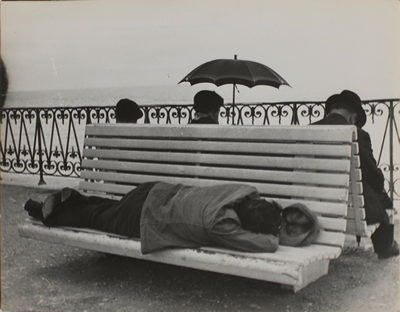
Organised on the basis of the Pompidou Centre’s photography collections, this exhibition
sheds a new light on social and documentary photography, emerging in Europe,
particularly in France and in Belgium, in the early thirties. The Popular Front and the
icons of the Spanish Civil War still broadly summarise today the idea of commitment
during the inter-war years to the detriment of this essential period whose iconographic
repertory represents a real laboratory for photography seen from a socially-committed
perspective.
Through a selection of almost 100 works and forty or so documents, the Exhibition
is built around thematic axes (antimilitarism, the struggle against the colonies, etc.)
and formal series, where the greatest names of modern photography are found side
by side (Willy Ronis, Eli Lotar, Nora Dumas, Henri Cartier-Bresson, Germaine Krull,
Gisèle Freund, Willy Kessels, Lisette Model, etc.).
Photography as a weapon of class struggle questions the shift from a picturesque iconography
of poverty, epitomised by the Paris of Eugène Atget (1857-1927) to social
awareness of the picture of destitution portrayed by the capital at the beginning of
the thirties. Specific techniques, such as photomontage, are given particular prominence,
with the architect and militant Charlotte Perriand (1903-1999) who, at that
time, was able to grasp the “explosive” potential of photographic montage. Lastly,
recurring iconographic subjects, from the image of the worker to representations ofthe collective struggle, not to mention the strategies of the illustrated left-wing press
(Regards, Vu, Vie ouvrière en Belgique) make it possible to fill the gaps in the picture
of social photography during the inter-war years, with the help of recent discoveries.
Photographie, arme de classe, (photography as a weapon of class struggle) are the words
with which the journalist Henri Tracol (1909-1997) begins his manifesto on unifying the
photography section of the association of revolutionary writers and artists (A.E.A.R.).
The Association was founded in Paris in 1932, against a background of growing political,
economic and social upheaval. In Belgium, Henri Storck, at the request of Louis
Aragon, was the one who would form the revolutionary cultural association (A.R.C.).
1
Jacques-André Boiffard
Chaussure et pied nu, vers 1929
Épreuve gélatino-argentique
Centre Pompidou, Paris
© Centre Pompidou, MNAM-CCI/
Philippe Migeat/Dist. RMN-GP
© Mme Denise Boiffard |
2
Pierre Jamet
Le Banc, Nice, 1936
Épreuve gélatino-argentique,
Achat grâce au mécénat de Yves Rocher en 2011. Ancienne collection
Christian Bouqueret
Centre Pompidou, Paris
© Centre Pompidou, MNAM-CCI/Philippe Migeat/Dist. RMN-GP
© Pierre Jamet |
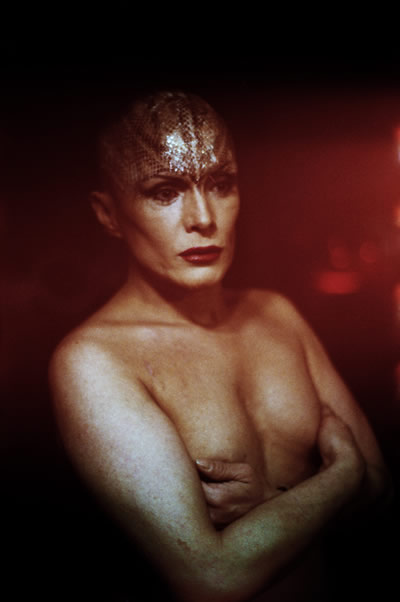 SANDRINE LOPEZ SANDRINE LOPEZ
ARKHÊ
Where is the source of Sandrine Lopez’s photographs to be found? What is the starting
point and the focal point? A fascination for a silhouette, a posture, a face? A desire to
get as close as she possibly can, to grasp its very essence?
In thirty or so photographs, Arkhê presents the result of pursuits and encounters that
were obsessive, thrilling and tense but were all fascinating. They would all lead to a
portrait, an image, with night as their common denominator.
Arkhê, a both sublime and terrifying confrontation with the body, the persistence of
that look already described by Christophe Van Rossom in the text accompanying the
images of Moshé, her previous work: “a blinking look shifting between curiosity and
terror, into the depths of a being”.
Sandrine Lopez is a French photographer and video maker, born in 1982, who lives
and works in Brussels. After a Master’s degree in Sociology in Bordeaux, she devoted
herself to photography and left to study at the École Supérieure des Arts de l’image
“Le 75” in Brussels.
She graduated in June 2011, and continued an exploration taking various forms and
crossing through spaces within which the human figure remains central. Between
photography, video and writing, she regularly shares the progress of her work during
conferences given in the context of the various jobs she has held since 2012. She is
currently completing the making of a documentary film (at the post-production phase)
entitled “Demain c’était Dimanche”, (Tomorrow was Sunday) in which she paints the
portrait of a man with no memory with whom she shared everyday life.
Outside the school walls, she organises workshops “The House” with the photographer
Sébastien Van Malleghem and co-founded the AHHA platform in cooperation with
the photographer Pierre Liebaert.
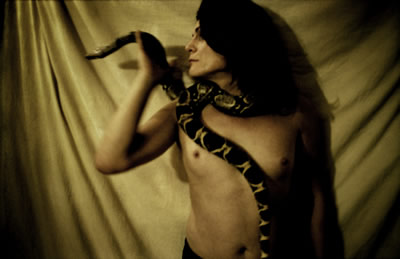
1
Sandrine Lopez
De la série Arkhê
© Sandrine Lopez |
2
Sandrine Lopez
De la série Arkhê
© Sandrine Lopez |
PHILIPPE GRATON
ZAD
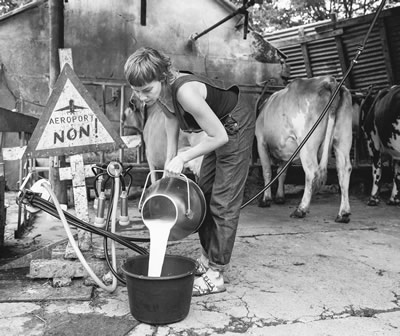 The ZAD* of Notre-Dame-des-Landes, to the north of Nantes (France), has been figuring
prominently in the news for ten years. The ZAD* of Notre-Dame-des-Landes, to the north of Nantes (France), has been figuring
prominently in the news for ten years.
Arising from opposition to the building
of an airport in a nature conservation area, it became a place for experimentation
for alternative society, organic farming, non-commodified relations and other social
experimentation.
This continued after the victory of the struggle and the abandonment
of the airport project by the French Government, early 2018.
From 2014 to 2019, Philippe Graton experienced the ZAD of Notre-Dame-des-Landes
from the inside, succeeding in being accepted by the militants, photographing that
world and that society’s everyday life with medium-format film. This long-term commitment
gives us an outstanding photographic work, a unique and historical restitution
of this marginal experience.
The interest of this experience and the societal choices
it raises have never been so relevant today.
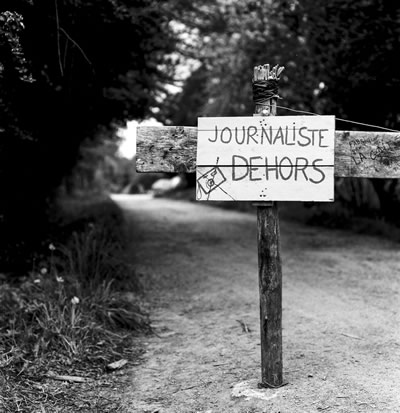 The exhibition presents sixty or so unpublished pictures. The book that accompanies
the exhibition reveals, in addition to the photographs, the author’s field notes, to be
followed like an adventure. The exhibition presents sixty or so unpublished pictures. The book that accompanies
the exhibition reveals, in addition to the photographs, the author’s field notes, to be
followed like an adventure.
A unique testimony, different from everything that people may
have seen or heard about the ZAD.
* ZAD is the French administrative acronym for a “zone d’aménagement différé” (future
development zone) intended for a major construction project. The opponents to the
project misappropriate the term and call it “zone à défendre” (zone to be defended).érêt et les
choix de société qu’elle soulève n’ont jamais été aussi actuels.
As a Frenchman born in Brussels in 1961, Philippe Graton grew up among picture
storytellers: René Goscinny, Albert Uderzo, Jean-Michel Charlier or even his father
Jean Graton, giants of the comic book. No wonder that his involvement in photography,
from the early age of thirteen, has always been connected with writing. A life of
tales in texts and pictures took him from racetracks to film sets by way of Vietnam,
Cambodia or the war in Bosnia which he photographed for the Sygma agency.
1
Philippe Graton
Uma à la ferme de Bellevue,
ZAD, Notre-Dame-des-Landes, juin 2015
© Philippe Graton |
2
Philippe Graton
La Wardine, ZAD, Notre-Dame-des-Landes, avril 2017
© Philippe Graton |
|

 L E M U S É E D E L A P H O T O G R A P H I E
L E M U S É E D E L A P H O T O G R A P H I E
 SANDRINE LOPEZ
SANDRINE LOPEZ The ZAD* of Notre-Dame-des-Landes, to the north of Nantes (France), has been figuring
prominently in the news for ten years.
The ZAD* of Notre-Dame-des-Landes, to the north of Nantes (France), has been figuring
prominently in the news for ten years.  The exhibition presents sixty or so unpublished pictures. The book that accompanies
the exhibition reveals, in addition to the photographs, the author’s field notes, to be
followed like an adventure.
The exhibition presents sixty or so unpublished pictures. The book that accompanies
the exhibition reveals, in addition to the photographs, the author’s field notes, to be
followed like an adventure.